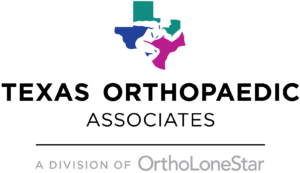Tennis elbow is a common condition that affects the tendons in your elbow and forearm. The pain from tennis elbow makes it challenging to complete simple tasks like opening doors and gripping objects. If you’re experiencing symptoms of tennis elbow, the team at Texas Orthopaedic Associates provides patients with reliable and effective pain relief. With offices in Dallas, Plano, Weatherford, Keller, and Fort Worth, Texas, you’re sure to find an office conveniently near you. Call your preferred office or book online today.
TENNIS ELBOW Q&A
What causes tennis elbow?
Despite the name, tennis elbow isn’t restricted to athletes. Tennis elbow, or lateral epicondylitis, occurs when the tendons in the elbow endure repetitive stress. Overuse of the forearm muscles causes tiny tears in the tendons that connect the forearm to the elbow, resulting in elbow pain, stiffness, and a limited range of motion.
The movements associated with playing tennis (straightening and raising the arm with force) are often the cause of tennis elbow, giving the condition its name.
How is tennis elbow diagnosed?
Tennis elbow is primarily diagnosed through a physical exam. Your provider examines the area for pain, tenderness, and strength. They’ll ask you to perform simple tasks, like straightening your arm and moving your wrists and fingers.
You and your provider discuss your medical history to determine if there may be other underlying causes for your pain. In addition to a physical exam, your doctor may perform an X-Ray, MRI, or Electromyography (EMG) to rule out conditions like arthritis and fractures.
How is tennis elbow treated?
Mild tennis elbow can often be treated with rest and icing of the affected area. If your condition is severe or persistent, the experts at Texas Orthopaedic Associates can take other measures to relieve your pain. Treatments for tennis elbow include:
Home remedies
If your tennis elbow is mild, your provider may recommend avoiding activities that aggravate your elbow pain. You can try over-the-counter pain relievers or intermittent icing if the pain persists. Texas Orthopaedic Associates advises working with your coach to develop alternative techniques to avoid stress on your tendons, if your tennis elbow is related to sports activity.
Physical therapy
Physical therapy is an effective nonsurgical solution to tennis elbow. Physical therapy can help you stretch and strengthen the muscles in your forearm. You may also be asked to wear a brace to reduce stress on the injured elbow.
Minimally invasive surgery
Texas Orthopedic Associates also offers minimally invasive surgery if your condition doesn’t respond to noninvasive methods. Your doctor uses several small incisions to remove and replace damaged tissue in your elbow and forearm.
Your treatment depends on the severity of your condition. The team at Texas Orthopaedic Associates develops individualized treatment plans designed to optimize your recovery and get you back to your routine.
To find out which treatment is best for you, call the office nearest you or book an appointment online today.


